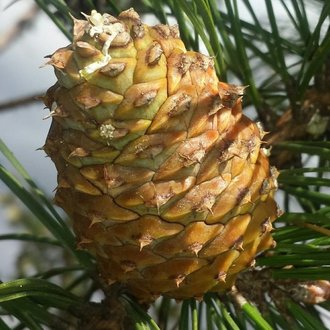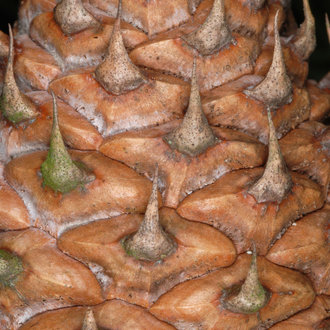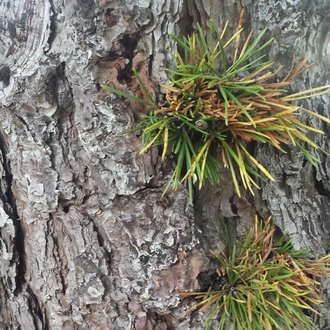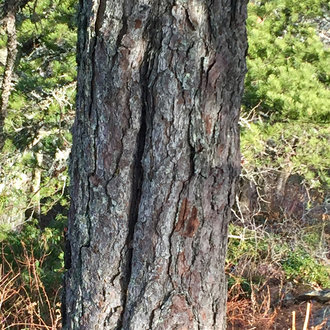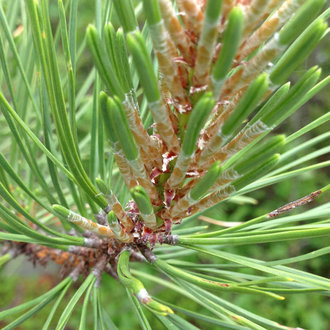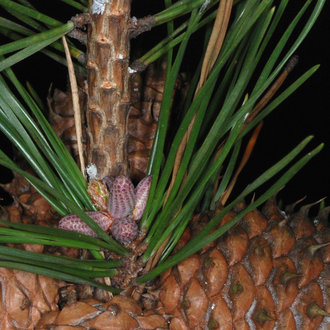Pitch Pine vs Table Mountain Pine
This guide is under construction and has not been published yet. It may have errors. When in doubt, double-check other sources for definitive ID.Although pitch pine has a much broader range, where their ranges overlap, these species can be hard to distinguish. They have similar growth habits, overlapping needle lengths, and are often found together in the same habitat. They can be told apart by the prickers on cone scales, and often by number of needles per bundle. Pitch pines can also be easily identified when they sprout off the trunk.
Pitch Pine (Pinus rigida) | Table Mountain Pine (Pinus pungens) |
A scrubby, fire-adapted pine that often grows in harsh conditions, such as dry, acidic, sandy or rocky soil. | A scrubby pine of exposed, rocky sites, mostly found at high elevations in the Appalachians. |
Cone scales have a narrow prickle that is often shed rather quickly. Photo © Laura Gaudette, CC BY 4.0. | Cone scales have a thick prickle, often described as a "claw", which is retained indefinitely even if the tip becomes slightly blunted. Photo © Doug Goldman, CC BY 4.0. |
Sometimes sprouts from the trunk. Photo © Laura Gaudette, CC BY 4.0. | Although it can resprout from the base when injured, never sprouts from the trunk. Photo © CK Kelly, CC BY 4.0. |
Consistently has 3 needles per bundle. Photo © charlie, CC BY 4.0. | Can have 3 needle per bundle, but often has only 2. Photo © Doug Goldman, CC BY 4.0. |
References & External Resources
These short lists show only links helpful for ID. For a complete list of references and resources also covering other aspects of ecology, visit the links section of the full article on each plant, which is the first entry here.



